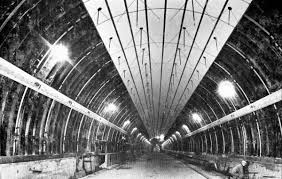
Introduction
The Clyde Tunnel is a crucial transportation route in Glasgow, connecting the south and north sides of the River Clyde. Opened in 1963, it plays an essential role in the city’s infrastructure, alleviating traffic congestion and providing a reliable passage for vehicles, cyclists, and pedestrians alike. Its importance has only grown as Glasgow continues to expand and develop, making the Clyde Tunnel a focal point in discussions about urban mobility and infrastructure development.
Historical Background
The construction of the Clyde Tunnel was a remarkable engineering feat, completed at a time when Glasgow was emerging as an industrial powerhouse. The tunnel spans 1,209 meters and includes dual carriageways intended to handle heavy traffic. Initially, it aimed to reduce travel time across the river, which was previously reliant on ferry services and limited road crossings.
Recent Developments and Usage
In recent years, there have been several initiatives to enhance the accessibility and safety of the Clyde Tunnel. The Glasgow City Council has launched projects to improve pedestrian and cyclist access, including the installation of dedicated cycle lanes and better lighting to ensure safety at night. In 2023, traffic volume in the tunnel was recorded at around 24,000 vehicles per day, indicating its ongoing significance in the urban transport network. Environmental concerns have also risen, prompting studies to assess the impact of increased traffic on air quality in the surrounding areas.
Significance for Future Planning
Looking forward, the Clyde Tunnel is set to undergo further upgrades to accommodate projected urban growth in Glasgow. Urban planners are considering the tunnel as a potential site for expanding public transport options, including discussions about a dedicated bus lane to promote sustainable transit solutions. Aligning with Glasgow’s commitment to reducing carbon emissions, such improvements could play a significant role in the city’s mobility strategy over the next decade.
Conclusion
The Clyde Tunnel not only serves as a vital transportation route but also represents important opportunities for enhancing urban planning in Glasgow. Its upcoming upgrades reflect a commitment to sustainable transport and improved infrastructure, aligned with environmental goals. As the city grows, the Clyde Tunnel will remain an indispensable component of Glasgow’s journey towards a greener and more connected urban future.
You may also like

Understanding the Importance of Rayleigh Weir

The Prince of Wales Bridge: Recent Developments and Significance
